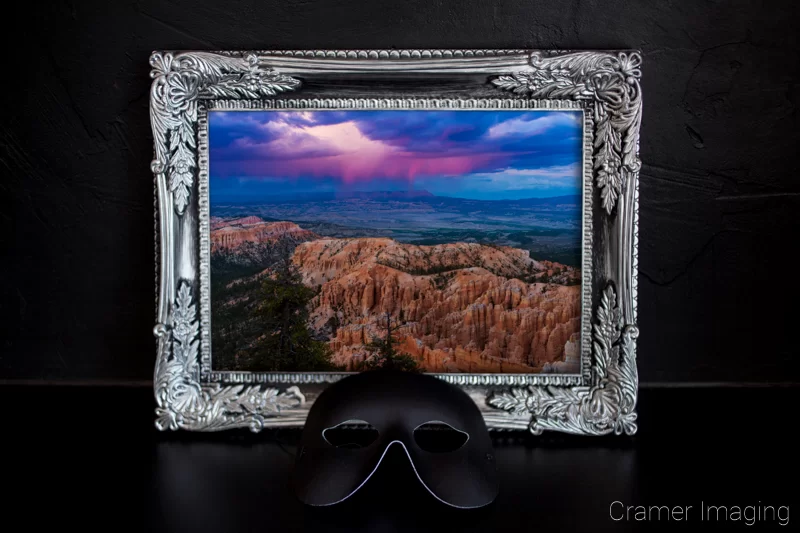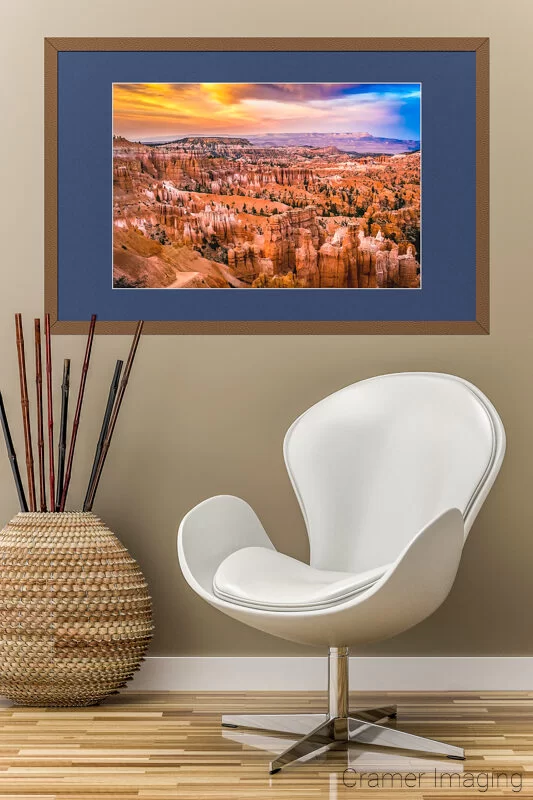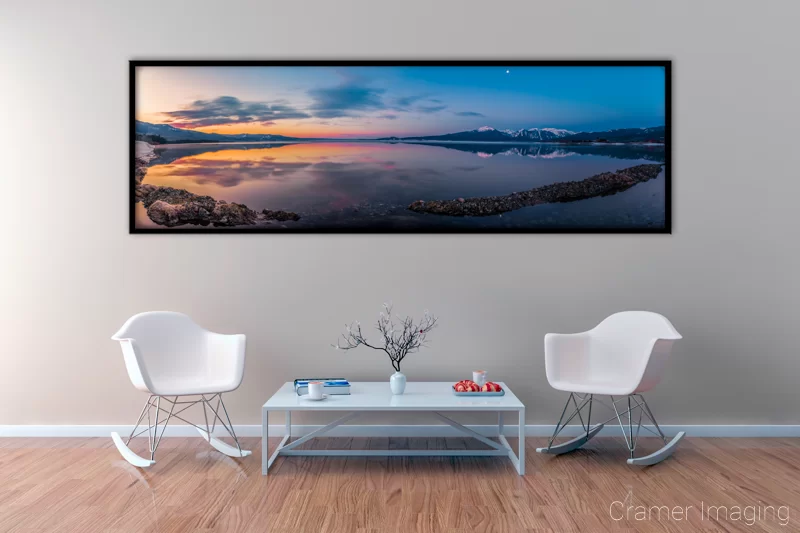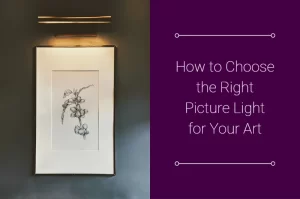As you start building your own gallery (home or professional) or even just your own gallery wall, you will surely come across the question of what paint color to use. It’s a natural part of the process. Today, we’re discussing that topic.
I don’t find that I often put much thought into what color of paint I choose for a wall. Default white is probably what I’ll go with most of the time. However, when it comes to a gallery wall of any form, I have more options than I knew of.
Color Guidelines
Let’s use an analogy for you to better visualize the role which the wall paint color plays in a gallery wall.
Imagine your walls and your art as taking roles in a play or a movie. Obviously, the art will take the leading roles as it’s what you want your audience and guests to focus on. The wall color or wallpaper will take up a supporting role as you don’t actually want people focusing on the wall over the art. The wall fills the negative space which is still important but not intended to be the focus at all.
The color of the wall needs to support the leading actors (your wall art) but not get in their way as the wall(s). Your wall color needs to complement the scene but not overpower it at the same time. This is why you will often see more muted colors preferred over bright and flamboyant colors for gallery walls.
The White Gallery Wall
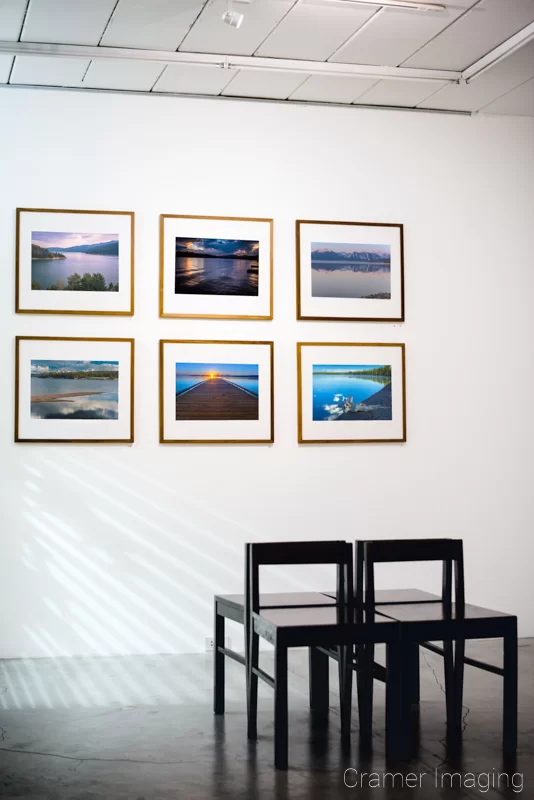
When it comes to choosing your wall paint for a gallery wall, you need to take a hard look at the color palette which you plan on using in your art. Is it generally warm, cool, monochromatic, etc.? This is a good place to start to choosing your paint color for a gallery wall.
Now some of you might be thinking that you’ll just make things simple for yourselves and go with a straight white wall for your gallery or gallery wall. But you might want to put your paint brushes and paint rollers down for a bit first. There is some logic behind this choice of white as it can look well when done right, but there is also some fallacy in this choice as well.
The modern white wall has its place. It does very well for brightening up a space and goes easily with most decor. However, when if comes to a gallery, you are deliberately choosing art of a particular theme (be it subject matter, color, style, etc.). White may or may not be the best option for making the leading actors look their very best.
Color Choices for Gallery Walls
When it comes to choosing your wall paint for a gallery wall, you need to take a hard look at the color palette which you plan on using in your art. Is it generally warm, cool, monochromatic, etc.? This is a good place to start choosing your paint color.
If you find that you have a warm color palette, you might consider a warmer color for your wall such as a pale yellow or a soft orange. If you have a cool color scheme, you might consider a pale blue or green. There are exceptions to every rule. Nautical themes, for example, often get a bolder color of blue.
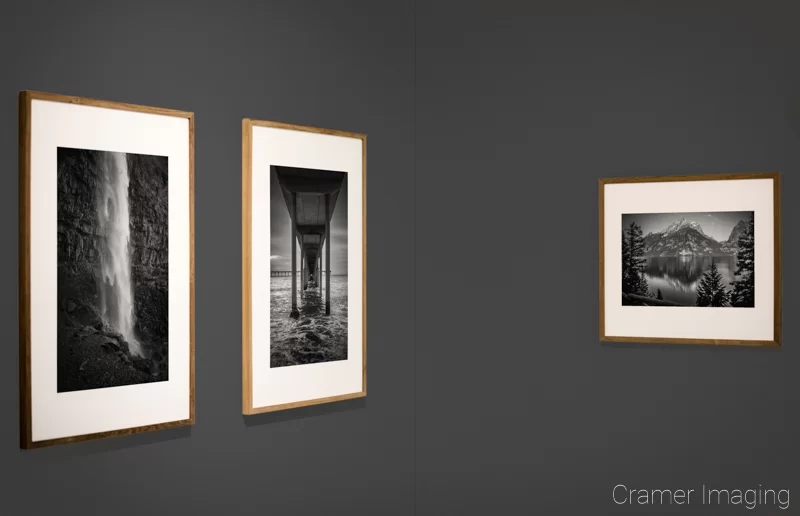
Use the paint chips available and choose a color which will work well with all the art you want to hang.
Professional galleries often change their wall colors more frequently than home galleries do because of changing exhibitions. The same rules still apply. They may just apply more often than in that setting.
Paint Finish Guidelines
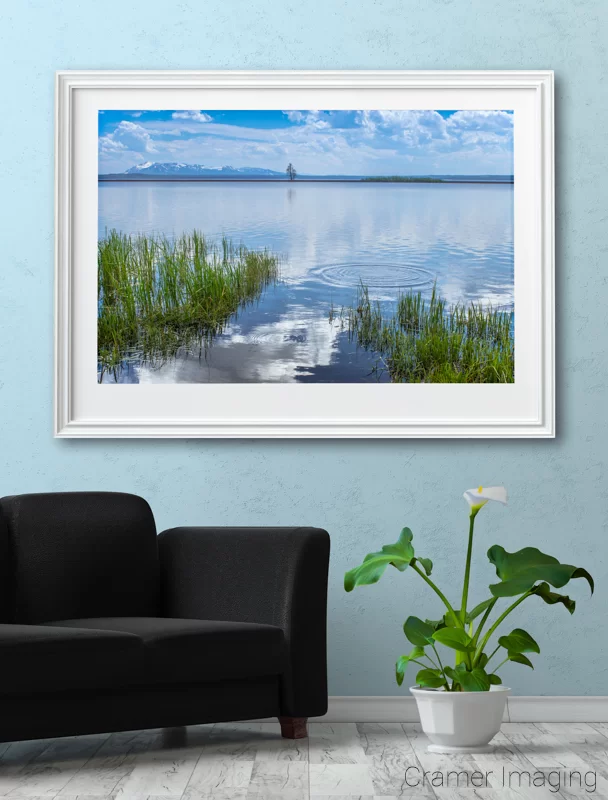
One big thing to consider with choosing paint is the finish. You have options for glossy, satin (or semi-gloss), and mat finishes. Believe it or not, especially for professional galleries, the choice of paint finish is also very important.
High sheen gloss is highly reflective. It’s not as bad as the glass in a picture frame but it’s still reflective. The glossy finish will reflect things including the floor. This can change the lighting conditions or slightly alter the perceived color of your art. It might be subtle but it might not be quite so subtle either.
Your best choice for gallery wall paint finish is mat. It will not reflect things like the floor up to where you don’t want them to be. It will let your art look perfect without distraction from the surrounding area.
If mat finish is not available in your choice of paint color, then please use satin or semi-gloss finish. While it will be slightly reflective, it will not be nearly as reflective as glossy finish paints. Satin finish will still enable your wall art exhibits to be viewed as intended.
Conclusion
When choosing the right color of paint for a temporary or more permanent exhibition of wall art, stark white walls might not be your best choice. Choosing a paint color which will complement but not detract from the exhibits themselves may actually enhance the viewing pleasure of your wall art. With paint finishes, there is less options for optimal viewing. Mat finish is the best option followed by satin or semi-gloss if mat is not available. Glossy finishes are to be avoided.
If you as a curator (for a gallery, museum, or your own personal home) take the time to choose the right background and foundation for your gallery wall(s), your wall art will shine as the leading actors on stage which it should be.
Have you any examples of good or terrible choices for paint behind wall art? Share them in the comments below.

